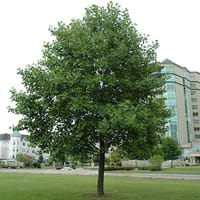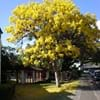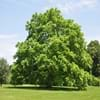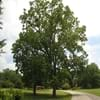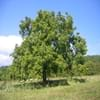Life Span
Annual and Perennial
Perennial
Origin
South America, Brazil
Northeastern United States, Mid-Atlantic United States, Southeastern United States, Central United States
Types
Not Available
Ardis, Arnold, Aureomarginatum
Habitat
Dry areas, Forest edges
Bluffs, low mountains, Moist Soils, Woodlands
USDA Hardiness Zone
9-12
5-9
Sunset Zone
H1, 13, 16, 17, 18, 19, 20, 21, 22, 23, 24
1a, 1b, 2a, 2b, 3a, 3b, 4, 5, 6, 7, 8, 9, 10, 11, 12, 14, 15, 16, 17, 18, 19, 20, 21, 22, 23
Habit
Oval or Rounded
Pyramidal
Flower Color
Yellow, Lemon yellow
Orange, Light Yellow
Flower Color Modifier
Bicolor
Bicolor
Fruit Color
Brown, Sandy Brown
Lime Green, Brown
Leaf Color in Spring
Green, Light Green
Green, Light Green
Leaf Color in Summer
Green, Gray Green
Green
Leaf Color in Fall
Green, Gray Green
Yellow, Light Yellow, Yellow green
Leaf Color in Winter
Not Available
Not Available
Leaf Shape
Oblong
Irregular
Plant Season
Spring, Winter
Spring, Fall
Sunlight
Full Sun
Full Sun, Partial Sun
Type of Soil
Clay, Loam, Sand
Clay, Loam
The pH of Soil
Acidic, Neutral, Alkaline
Acidic, Neutral
Soil Drainage
Well drained
Average
Bloom Time
Early Spring, Late Winter
Late Spring
Tolerances
Drought
Soil Compaction
Where to Plant?
Ground
Ground
How to Plant?
Seedlings, Seperation, Vegetative Reproduction
Seedlings
Plant Maintenance
Medium
Low
Watering Requirements
Keep the ground moist but not water-logged, Requires watering in the growing season, Water more in summer, Water occasionally
Do Not over Water, Keep the ground moist but not water-logged, Requires regular watering
In Summer
Lots of watering
Ample Water
In Spring
Moderate
Moderate
In Winter
Average Water
Average Water
Soil pH
Acidic, Neutral, Alkaline
Acidic, Neutral
Soil Type
Clay, Loam, Sand
Clay, Loam
Soil Drainage Capacity
Well drained
Average
Sun Exposure
Full Sun
Full Sun, Partial Sun
Pruning
Cut leaves after fall, Pinch or prune as they grow to promote branching and bushiness, Prune before Winter, Prune when plant is dormant, Remove dead leaves, Remove deadheads
Prune ocassionally, Remove dead branches
Fertilizers
All-Purpose Liquid Fertilizer
All-Purpose Liquid Fertilizer, fertilize in spring, Fertilize the soil instead of direct applying, Mulch
Pests and Diseases
Pests and diseases free, Red blotch
fusarium canker, nectria canker, yellow-poplar weevil
Plant Tolerance
Drought
Soil Compaction
Flower Petal Number
Single
Not Available
Foliage Texture
Medium
Coarse
Foliage Sheen
Glossy
Matte
Attracts
Not Available
Birds
Allergy
Not Available
Not Available
Aesthetic Uses
Showy Purposes
Showy Purposes
Beauty Benefits
Not Available
Not Available
Environmental Uses
Air purification
Shadow Tree, Shelter for wildlife
Medicinal Uses
Not Available
Arthritis, Digestion problems, Fever, Inflammation, Wounds
Part of Plant Used
Leaves, Wood
Whole plant
Other Uses
Wood is used for making furniture, Wood is used in construction
Food for animals, Grown for shade, Used as Ornamental plant, Used in Furniture
Used As Indoor Plant
No
No
Used As Outdoor Plant
Yes
Yes
Garden Design
Feature Plant, Shade Trees, Street Trees, Tropical
Feature Plant, Shade Trees, Street Trees
Botanical Name
HANDROANTHUS billbergii
LIRIODENDRON tulipifera
Common Name
Guayacán, Tabebuia
Tulip Poplar, Yellow Poplar
In Hindi
Tabebuia
ट्यूलिप पेड़
In German
Tabebuia
Tulpenbaum
In French
Tabebuia
tulipier
In Spanish
Tabebuia
árbol de tulipán
In Greek
Tabebuia
δέντρο τουλίπα
In Portuguese
Tabebuia
árvore de tulipa
In Polish
Tabebuia
tulipanowiec
In Latin
Tabebuia
Tulipa arbore
Phylum
Not Available
Tracheophyta
Class
Not Available
Magnoliopsida
Order
Lamiales
Magnoliales
Family
Bignoniaceae
Magnoliaceae
Genus
Tabebuia
Liriodendron
Clade
Angiosperms, Asterids, Eudicots
Angiosperms, Magnoliids
Tribe
Not Available
Not Available
Subfamily
Not Available
Not Available
Importance of Tabebuia and Tulip Tree
Want to have the most appropriate plant for your garden? You might want to know the importance of Tabebuia and Tulip Tree. Basically, these two plants vary in many aspects. Compare Tabebuia and Tulip Tree as they differ in many characteristics such as their life, care, benefits, facts, etc. Every gardener must at least have the slightest clue about the plants he wants to plant in his garden. Compare their benefits, which differ in many ways like facts and uses. The medicinal use of Tabebuia is Not Available whereas of Tulip Tree is Arthritis, Digestion problems, Fever, Inflammation and Wounds. Tabebuia has beauty benefits as follows: Not Available while Tulip Tree has beauty benefits as follows: Not Available.
Compare Facts of Tabebuia vs Tulip Tree
How to choose the best garden plant for your garden depending upon its facts? Here garden plant comparison will help you to solve this query. Compare the facts of Tabebuia vs Tulip Tree and know which one to choose. As garden plants have benefits and other uses, allergy is also a major drawback of plants for some people. Allergic reactions of Tabebuia are Not Available whereas of Tulip Tree have Not Available respectively. Having a fruit bearing plant in your garden can be a plus point of your garden. Tabebuia has no showy fruits and Tulip Tree has no showy fruits. Also Tabebuia is not flowering and Tulip Tree is not flowering . You can compare Tabebuia and Tulip Tree facts and facts of other plants too.

